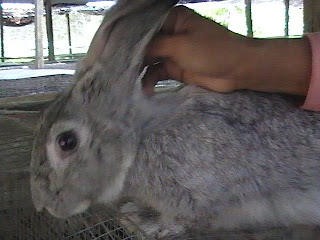
Rabbits in general have a very similar attitude towards cleanliness as cats do. For this reason it is relatively simple to train them in the use of the litter box. Rabbits spend quite a deal of deal cleaning themselves, maintaining their skin and fur in top shape. However, their personal upkeep by no means exempts pet owners from dedicating some time and effort to this task. Like most other pets, rabbits rely on their owner for an efficient maintenance plan that looks into all areas of hygiene.
One of the most important tasks in rabbit grooming is brushing the coat thoroughly. The more time you spend at this chore, his fur will look and feel that much better. Not to mention the fact that it will bring the pet owner closer to his rabbit. Make it fun, call it brushing the rabbit pet game and go with it. Other advantages of brushing the rabbits hair besides aesthetics, is removing debris and dead strings of hair the pet would otherwise swallow. Like it happens with cats, swallowing hair will form a hair ball in his throat that could prove dangerous to his health. In the event that the hairball, should in fact block the digestive system, the pet owner could face having to submit the rabbit to a surgical procedure costing hundreds of dollars.
When fixing a schedule for brushing the rabbits hear, consider they replace their fur approximately every three months. Be prepared to broom and vacuum all the dead hair left around the house. You will be amazed of how much hair can come out of such a tiny creature. When choosing a brush, remember not to get with hard bristles that may hurt the rabbit’s skin. Their skin is rather delicate; some people prefer wide angle plastic brushes just to go easy on them.
Like with most other pets, when properly taken care off they look fantastic. In order to do this pet owners must be committed to brushing hair regularly. As an alternative you may choose to trim the rabbit’s hair to about one inch in length. This will make your job considerably easier to maintain. In the event that you have little or no experience trimming your rabbit’s hair, don’t be afraid of spending a few dollars with a professional groomer. Make a note of how he does it, and how they handle themselves with the scissors around your rabbit.
A rabbit living in open space and on warm climates will be prone to a lot more physical activity. This activity will generate sweat, which will get cold and dry of on the rabbit. In consequence mats of tangled hair will form which are quite a challenge to remove. For these specific cases try removing the tangled hair with a comb first, before going for the scissors. As a manner of prevention, bathing your rabbit is a must.
Every few weeks your rabbits nails will need to be checked also, and trimmed if necessary. This task, as with many others can easily be done by your veterinarian in case you don’t feel up to the task just yet. Remember to have fun and enjoy the time you spend with your pet, after there is no reason why grooming cannot be a pet game instead of a gruesome chore.



